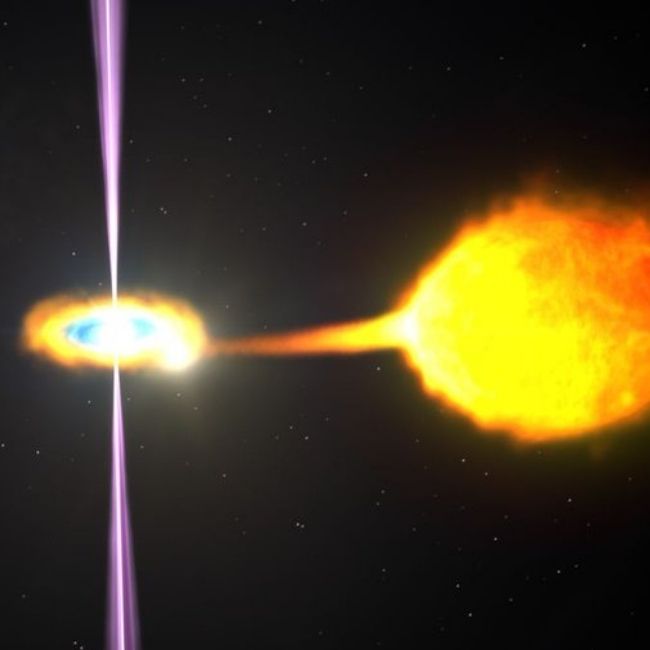
Black-widow pulsar found 3,000 light years away
Recommended for Middle Grades
Black-widow pulsar found 3,000 light-years away from Earth
Space is a mystery in itself. There are different and mysterious objects existing in the space. Scientists have recently found a black-widow pulsar which is about 3,000 light-years away from the Earth.
What is binary pulsar?
A binary pulsar is a pulsar with a binary companion, often a white dwarf or neutron star.
What is Black-widow pulsar?
The Black-Widow Pulsar is an eclipsing binary millisecond pulsar in the Milky Way.
The pulsar stays alive by using its smaller companion stars.
How do pulsars arise?
Pulsars arise when supergiant stars collapse into neutron stars. When these neutron stars are magnetized and spin rapidly, they become a pulsar.
Black-widow pulsars
The new pulsar is the most extreme and rare black-widow pulsar. It is named ZTF J1406+1222. The binary pulsar has the shortest orbital period. The black-widow pulsar and its prey circles the binary system every 62 minutes. The black-widow pulsar is found with visible light and it came from the galactic centre.
Black-widow binary systems are powered by pulsars. The pulsars spin around every few milliseconds and it emits flashes of high-energy gamma and X-rays in the process.
The pulsars spin down and die quickly. The binary systems are called black-widow pulsars as it consumes the passing stars and gains new energy. The process seems like a spider eating its prey. The gravity of the black-widow pulsar feeds on the material of the star which provides new energy to the pulsar. The new pulsar starts radiating the new energy that destroys the stars further.
Watch this video about the black-widow pulsars posted by NASA Goddard on YouTube:
![]()
What are the other space missions? Which countries or private companies are working on space technology? What are the exciting new discoveries that scientists and astronauts are making? Or how about learning more about NASA, CNSA, ISS, ALMA etc.? Keep reading our space news for children to discover more about science and space. Keep your curiosity sky high!
Over 500,000 children are benefitting from Curious Times today! We continue to seek your valuable feedback to serve you better. Feel free to write to us at hello@curioustimes.in.You can also follow us on WhatsApp, Instagram, Facebook Youtube, Twitter, LinkedIn.
0 (Please login to give a Curious Clap to your friend.)
